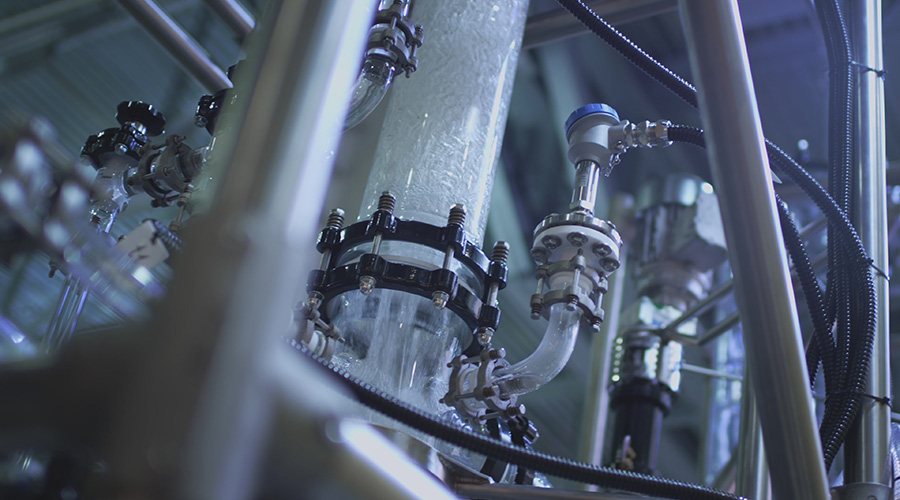Restroom Technology Paying Off
Touchless technology and related products advances generate benefits for housekeeping crews, managers and the public
Restroom design and technology is changing for the better. It used to be that visiting a restroom meant touching the door, the flush valve, the faucet, the hand dryer or paper-towel dispenser and the door again when leaving. This process was not very effective for controlling infections that could pass from one individual to another through touching common objects.
Combined with concerns about touching fixtures was the fact that many fixtures are not all that clean. Perennial complaints concern restroom areas that are either not cleaned or not stocked correctly. Of all building spaces, restrooms generate by far the most complaints.
Restroom Advances
With proactive planning, however, managers can decrease most such restroom problems. More often, users can visit restrooms that require little if any touching of doors, dispensers or fixtures. A number of significant product advances during the last few years have made this scenario possible:
Entryways. More restrooms have entrances that use no doors. By using a maze system when entering the restroom, users do not have to touch any doorplates or doorknobs.
Urinals and toilets. Increasingly, these fixtures have automatic-flush technology, which mean that a user does not have to touch the fixture. Auto-flush features provides a real benefit over manual-flush systems in that if the user fails to flush the unit, it flushes itself to keep the restroom smelling fresher and looking cleaner. Automatic toilet seat covers also are becoming increasing popular. The seat cover eliminates the need for the user’s skin to touch the toilet seat.
Sink fixtures. More restrooms now have automatic-on faucets and soap dispensers that activate when the user places hands near the fixture. Not only does this function provide the benefit of not touching the fixture, but it provides a metered amount of water or soap. The faucet cannot be left on, and it is hard for people to use too much soap.
Paper-dispensing systems. Towel dispensers can now dispense a metered amount of paper towel without having to touch the unit, and the same technology is being applied to toilet-paper dispensers. These types of units have two distinct benefits. First, the user does not have to touch the units, so the risk of infection is minimized. Second, because the units dispense a metered amount of paper, the usage of paper goods can be controlled. The manager of one facility says he was able to decrease the consumption of hand towels by more than 30 percent simply by installing metered self-dispensing towel systems in restrooms.
Waterless fixtures. In response to national efforts to conserve water, waterless urinals are becoming more common in institutional and commercial facilities. Users do not need to touch these fixtures, and they can be cleaned easily, since there is no water or rust build-up on surfaces. Maintenance costs also are lower, since the unit has no flushing mechanism. Some restrooms also now provide waterless hand cleaners, eliminating the need for both sinks and trash containers for paper towels.
Automatic-on hand dryers. Dryers that allow users to dry their hands without touching anything have been around for some time, but with increased concerns about cross-infection, facilities are installing more of them. Touchless hand dryers use no waste paper, so there is no need for trash containers in the restroom.
Odor control. Odors have been prime concern related to restrooms. Today, more effective ventilation systems circulate the air more frequently. Also, enhanced odor-control agents are dispensed through systems that use either a timing system or are activated by a photocell when someone uses the restroom.
Bigger dispensers. Soap, towel and toilet-paper dispensers are getting larger. This advance means housekeeping crews need to restock them less often, and with appropriate planning it is possible to minimize complaints that restrooms run out of paper goods and soap too often.
Cleaner’s Arsenal
Since today’s restroom technology is making cleaning increasingly easier, housekeeping crews need fewer cleaners, and managers find it easier to specify the needed products and equipment. Cleaners’ arsenals of products and cleaners should include:
-
A high-quality disinfectant for cleaning fixtures, surfaces that are touched, and floors, including floor drains.
-
A low- or non-acid bowl cleaner. Some areas of the United States have incredibly hard water but wherever and whenever possible, crews should use the least invasive bowl cleaner.
-
A high-quality glass cleaner. This product also can be used for cleaning chrome fixtures if there is no build-up from soap or hard water.
-
A microfiber cloth, which can clean surfaces, usually with few if any chemicals.
Purchasing Pointers
As one can see from the short list above few chemicals are needed for cleaning a restroom facility. But when purchasing chemicals, housekeeping managers should keep some general rules in mind.
Use the fewest chemicals possible. This strategy makes training easier, keeps expenses down and minimizes damage that can result from improper chemical used.
Use the least-hazardous chemicals available. This will help alleviate growing concerns about indoor air quality, worker safety and chemicals’ impact on the environment.
Consider using chemical metering systems. Ready-to-use chemicals are more expensive than concentrated chemicals that are diluted before use. To ensure the proper mixing of chemicals and control costs, it is highly advisable to use a metering system.
Compare end-use costs when buying chemicals. For instance, if a ready-to-use chemical costs $15 a gallon, the end-use cost is $15 a gallon because it isn’t diluted. But a cleaning chemical that costs $40 a gallon and is mixed at a rate of 1:256, or one-half ounce to a gallon of water, can make 256 gallons of end-use chemical. So its end-use cost is only $1.56 per gallon. Clearly, the concentrated product is much cheaper to use that the ready-to-use product.
Finally, make sure crews dispense chemicals from approved containers.
A restroom that is designed appropriately, uses appropriate touchless technology and is cleaned with the proper products is much easier to maintain and at a lower cost than a restroom that is poorly designed and that does not use touchless technology.
Indeed, housekeeping crews that clean a touchless restroom that uses technology at its best will take greater pride in their work because the restrooms will be cleaner, will remain cleaner longer and generate fewer complaints — significant benefits that are likely to satisfy any housekeeping manager.
Benefits of Touchless: A Closer Look
Restrooms that are designed to be more user-friendly are becoming increasingly popular with the public, and when touchless technology is installed effectively, there are numerous benefits for facilities and the general public:
The use of hand dryers eliminates trash from paper towels. As a result, facilities don’t need to purchase trash containers for paper towels, and housekeeping crews don’t need to empty them, resulting in substantial cost savings.
In facilities that require paper goods, using metered paper products can generate substantial savings. This tactic also minimizes the amount of waste paper left on the floor from torn pieces of paper, and it cuts down on the over-dispensing of towels that often happens with paper fold towels.
Also, surfaces are easier to clean. Since the components of touch-free restrooms — faucets, towel dispensers, hand dryers, flush valves, and doors and door knobs — do not have to be touched, they are easier to clean or do not need to be cleaned at all.
Again, every surface that is either easier to clean or does not require cleaning saves on labor, which can represent 60-90 percent of a housekeeping department budget.
— Alan S. Bigger and Linda B. Bigger
|
Related Topics:











